Behind the scenes of the signage for the Paris 2024 Olympic and Paralympic Games
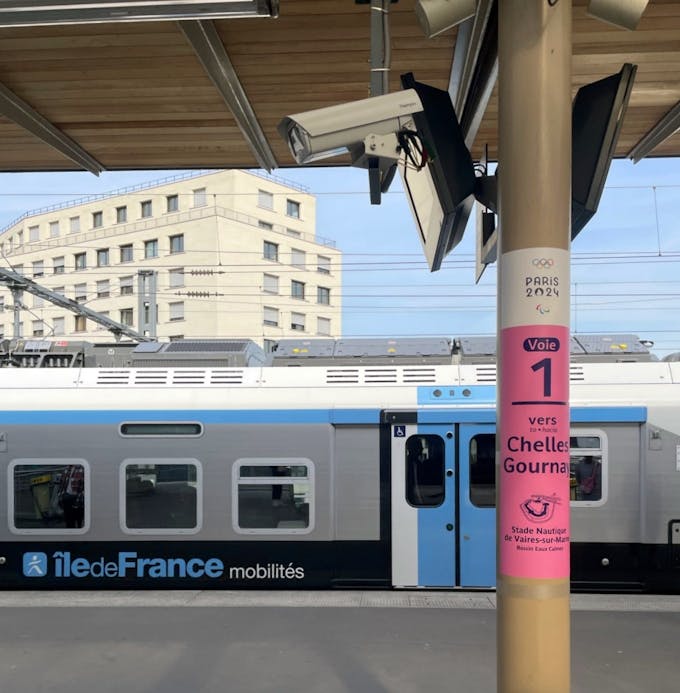
Rosa Parks dresses in the colours of the Paris 2024 Games
Rose of happiness! The exclusive signage for the Paris 2024 Olympic and Paralympic Games has just been unveiled at the Rosa Parks train station (Paris 19th).
During the Paris 2024 Games, this RER E station will serve the Arena Porte de la Chapelle (site of Badminton and Rhythmic Gymnastics during the Olympic Games, Para Badminton and Para Weightlifting during the Paralympic Games) and the Parc de la Villette (which will host Club France and the Parc des Nations). A good reason to serve as a setting for the presentation of the signage for the Paris 2024 Olympic and Paralympic Games.
By 24 July, this signage will be installed in around a hundred stations in the Île-de-France region, so, in the meantime, we asked Camille Yvinec, Deputy Director of Games Identity, to tell us how it was designed.
Signage: what is it? (and why it's essential)
With 10 million spectators expected throughout the Olympic and Paralympic Games, signage is crucial to ensure an optimal experience for all.
But what exactly is signage?
It is a graphic system that will use signs - numbers, pictograms, text, colors, symbols. A real visual language that formulates authorisations or prohibitions and aims to guide, facilitate and simplify the orientation to allow spectators to travel smoothly to the competition venues.
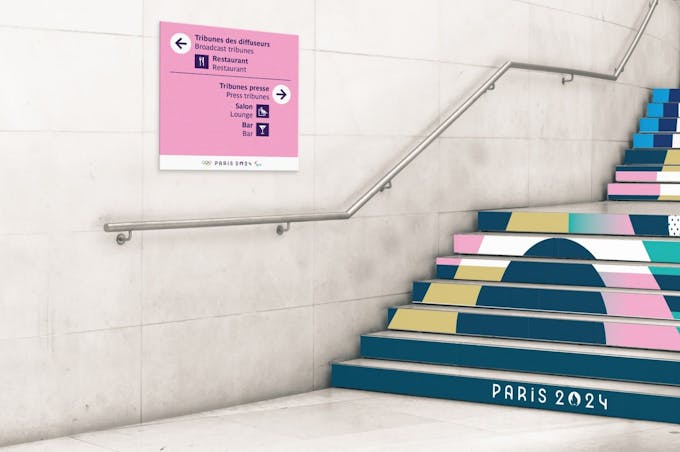
The challenge of integration into the existing signage environment in Paris and Île-de-France
In the metro, in stations and buses, in the streets: the Ile-de-France environment is already rich in signs and graphic codes, some of which are powerful and very established. The real challenge for the signage for the Paris 2024 Games was therefore to offer a distinctive and functional visual identity that could emerge anywhere, even in the metro, but without creating more visual noise.
"It was essential that the signage was integrated harmoniously, especially in places where the Paris 2024 Games branding would not be present," explains Camille Yvinec. "The work was therefore to find a visual coherence between the style of the Paris 2024 Games and the environments crossed, so that this signage could embody the spirit of the Olympic and Paralympic Games and sometimes even be the first visual clue for the spectators."
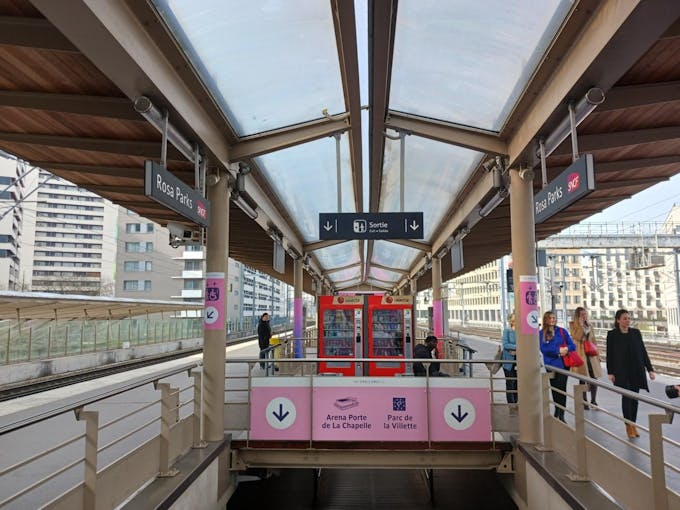
Work carried out in consultation
Camille Yvinec and her team naturally carried out this work of creation and consensus in consultation with the various players in the Île-de-France region : Île-de-France Mobilités and its operators RATP and SNCF, but also with the various municipalities and institutions hosting Olympic and Paralympic sites.
This joint work is essential because in order to welcome and guide visitors from all over the world to the competition sites, in optimal conditions, it was imperative that this signage be carried by all stakeholders.
"This collaboration has allowed us to take advantage of local knowledge and expertise, to integrate certain adjustments, thus facilitating the implementation of effective signage adapted to the specific needs of each site and each audience," says Camille Yvinec.
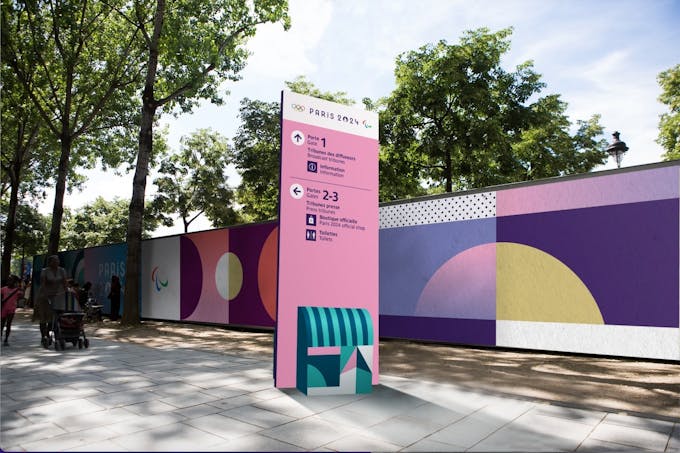
Pink, purple and a lot of legibility
As a result, the signage for the Paris 2024 Games is based on a very legible and royalty-free typography (an essential factor of appropriation for all the event's stakeholders), coupled with a unique and strong colour: pink.
Pink: a contrasting colour
A joyful and optimistic pink, powerful, determined and even a little provocative - "faithful to the French spirit" - which echoes the great celebration that will be these Olympic and Paralympic Games.
But pink is also designed as a contrasting colour, allowing the visual identity of Paris 2024 to stand out from the other colours used in the Ile-de-France environment.
"This pink also works as a link between the different sites - competition venues, train and metro stations, bus and tram stops, festive places or places linked to the organisation of the Olympic and Paralympic Games," explains Camille Yvinec.
Universality and accessibility
Beyond the pink, welcoming the whole world to Île-de-France meant designing signage that was accessible - and understandable - for all.
Offered in French and English, the signage for the Paris 2024 Games is based on a system of universal pictograms and on representations of sites and monuments in the Paris region treated with lines, in the manner of architectural drawings.
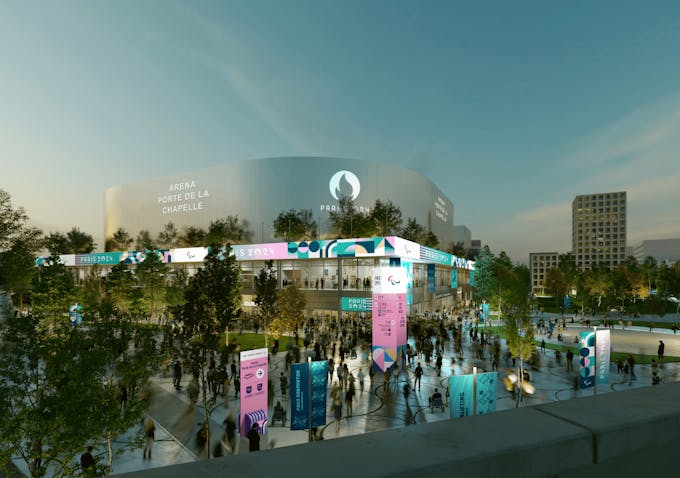
Architectural drawing and wonder
"What we wanted with these pictograms of the Olympic and Paralympic sites was to capture the architectural and heritage essence of the different places. We tried to represent each site as a whole, rather than showing it in a fragmented or isolated way," explains Camille Yvinec.
Thus, the Velodrome of Saint-Quentin en Yvelines is represented from an angle that highlights its distinctive character and its integration into the urban landscape. The Invalides site is symbolized by its emblematic dome, even though the competitions will take place on the adjoining esplanade
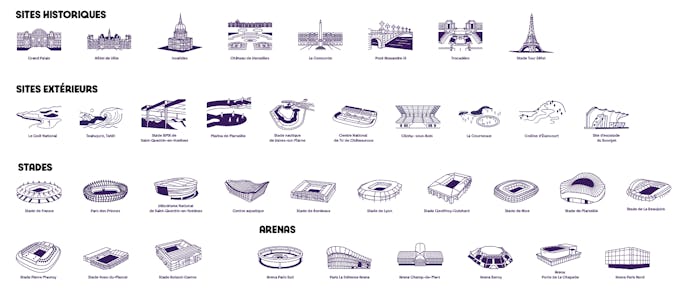
"This approach allows us to visually communicate the idea that the Paris 2024 Games will take place in emblematic places steeped in history. By focusing on the most recognizable architectural features of each venue, we seek to evoke a certain magic and a sense of wonder in spectators and attendees."
Accessibility for all
But above all, this signage has been designed to be as accessible as possible, in particular to people with reduced mobility or vision problems.
This work was carried out in close collaboration with associations and groups representing people with disabilities. "We collaborated with the Federation of the Blind and Amblyopic of France to ensure that our visual elements were accessible to visually impaired people," explains Camille Yvinec. And this is a success for pink, which, combined with a text written in purple, allows a color contrast of 83.6%, well above the 70% required by international standards in this area. Simply put: the texts, signs or pictograms of the Olympic and Paralympic Games will be very, very legible.
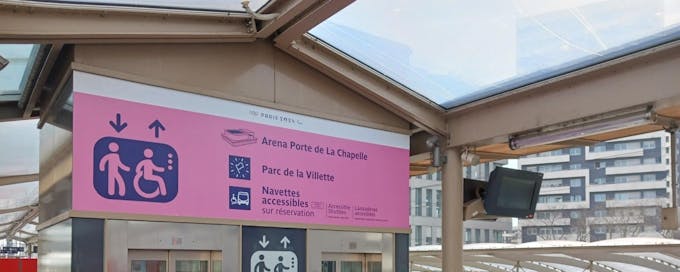
An accessibility issue that has also resulted in the development of detailed guidelines concerning size and scale ratios to guarantee optimal visibility of information, whether for people standing or in wheelchairs: reading distances, font sizes and positioning of signs according to traffic flows.
Agents to inform and guide
Of course, this universal signage will be complementary to a strong human presence, whether it is the thousands of information and orientation agents in stations or the volunteers of Paris 2024. All will be recognizable by their purple chasubles and present to orient and guide the spectators.
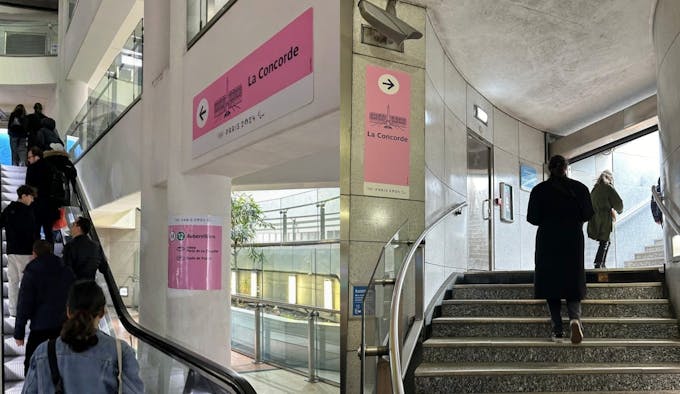
Beautiful but above all effective signage
Finally, the key word of this signage, which will be gradually deployed throughout the Île-de-France, and in particular in transport, is efficiency - much more than just aesthetics.
"The emphasis has been on contextualisation and relevance, ensuring that the signage fulfils its mission of orienteering, guiding and facilitating movement in an optimal way, before being an aesthetic design object in line with the codes of the Games," concludes Camille Yvinec.